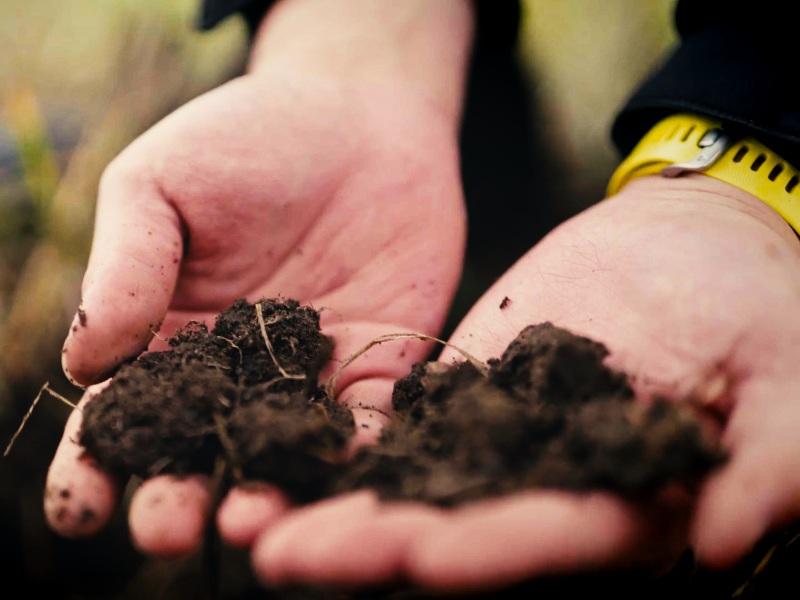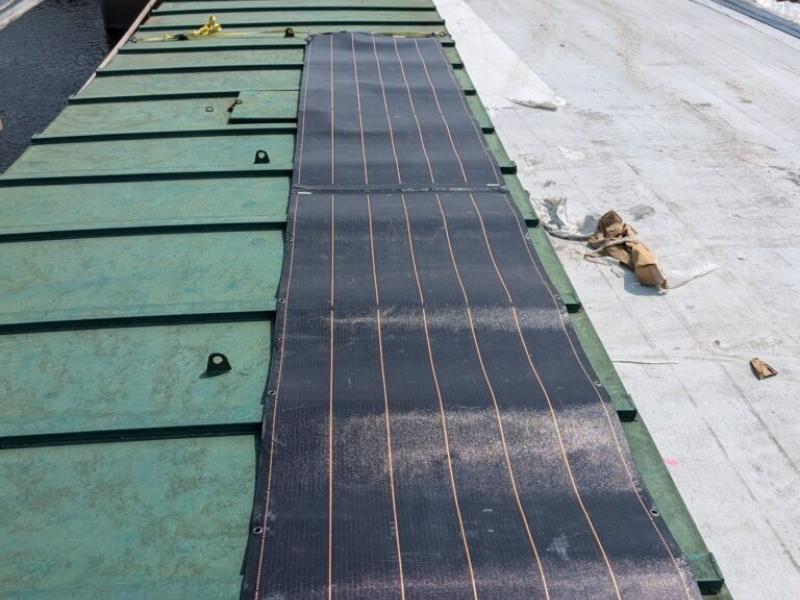
Overlooking Grimsby from the Beamer Memorial Conservation Area. (Courtesy NPAGG)
The Niagara Peninsula region is applying to become Ontario’s first UNESCO Global Geopark (UGGp) and only the sixth in Canada.
With support from the Greenbelt Foundation as well as tourism, conservation, academic, agricultural and Indigenous organizations, the Niagara Peninsula Aspiring Global Geopark (NPAGG) is hoping for a 2023 or early 2024 designation.
The UGGp designation applies to single, unified geographical areas with sites and landscapes of international geological significance. The peninsula is between the southwest shore of Lake Ontario and the northwest shore of Lake Erie, spanning the region from the Niagara River to Hamilton.
NPAGG will host an international delegation from UNESCO in 2023 as part of the bid, which it has been preparing for the past two years.
Marketing and tourism plans are already underway, which includes installation of over 100 signs across the region to provide wayfinding and educational content. Development is underway of Niagara-based itineraries for hiking opportunities as well as important Indigenous sites and trails.
More than just Niagara Falls
“The idea is to have (tourists) come to realize there’s a lot more to the Niagara region than (Niagara Falls) and get them to spend some extra time to go out and travel around the hinterland,” said Perry Hartwick, NPAGG’s board chair. “Look at some of the other amazing natural wonders and patronize the sustainable operators that are that are becoming part of our geopark operators’ network.”
Pre-pandemic, Niagara Falls had up to 14 million tourist visits each year.
The five other UGGps in Canada are:
– Stonehammer UGGp, N.B.
– Tumbler Ridge UGGp, B.C.
– Percé UGGp, Que.
– Cliffs of Fundy UGGp, N.S.
– Discovery UGGp, N.L.
According to an NPAGG release, the Stonehammer UGGp has increased visitor numbers five years after its certification, with tourism revenues increasing by 6.4 per cent, or $252 million.
NPAGG origins
UNESCO’s work with geoparks first began in 2001.
In 2004, 17 European and eight Chinese geoparks came together at UNESCO headquarters in Paris to form the Global Geoparks Network (GGN). In November, 2015, UNESCO member states ratified the creation of UNESCO Global Geoparks as a new label.
The idea to create a Niagara UGGp arose around the same time from founder Darren Platakis, also the executive director at the non-profit Geospatial Niagara. Hartwick was approached to join about four years ago thanks to his role as president of the quarrying company Upper Canada Stone Ltd.
“Every geopark needs a geologist,” he said.
Today there are 177 geoparks in 46 countries. It is not a formal legislative designation, and there are no new restrictions placed on economic activity when it is awarded.
The next step for the NPAGG process will be to obtain endorsement by the Canadian Geoparks Network, part of the GGN established in 2009. Following that, Hartwick said the organization would become “basically our coaches,” in preparation for UNESCO’s visit.
NPAGG will submit its formal application to UNESCO by the end of the year.
NPAGG is in talks with the Niagara Regional Native Centre and the Fort Erie Native Friendship Centre. Hartwick explained the organization is working with them on programs to be announced “in the coming weeks.”
The potential of a UGGp
The UGGp certification is not permanent. A site is given the designation for four years, after which a revalidation process occurs. If the site doesn’t meet the criteria for recertification, it’s given a further two years. Should it still not meet UNESCO’s standards, it would lose its UGGp status.
Despite the lack of formal measures that would come with a designation, Hartwick sees it as an indirect way to promote knowledge and preservation.
“The more people know about natural and wild spaces, the more people are going to appreciate and value them,” he said. “The ‘E’ in UNESCO is about education, ‘S’ is science, and ‘C’ is culture. We’re trying to educate people about the science and the culture of the Niagara Geopark.”
Hartwick explained NPAGG has a memorandum of understanding with the Niagara Peninsula Conservation Authority to allow its conservation sites to be considered part of the geopark.
Another partnership is with Niagara College, which Hartwick called “a bedrock partner.” The school is providing funding but also developing courses for the geopark on the environment, sustainable development and tourism.
Hartwick says almost all of the municipalities in the region have endorsed the geopark concept.
An “exciting project”
“This exciting project reflects the extensive geological sites found in the peninsula, including the southern end of the iconic Niagara Escarpment, and can enhance meaningful visits to the greenbelt and support rural tourism and pandemic recovery,” said Edward McDonnell, CEO of the Greenbelt Foundation in a statement regarding Niagara’s UNESCO application.
“A first in Ontario, the Niagara Peninsula Geopark will increase local and eventually international visitors while enhancing understanding of these lands and why they are protected.”
The Greenbelt Foundation is a charitable organization focused on ensuring the Ontario Greenbelt — the world’s largest at over two million acres — remains permanent and prosperous. Since 2005, it has contributed over $47 million to projects aligning with these goals.
Some of the other project partners include Great Wolf Lodge, Niagara Falls Water Resort, Arterra Wines and the Willowbank School for Restoration Arts.










